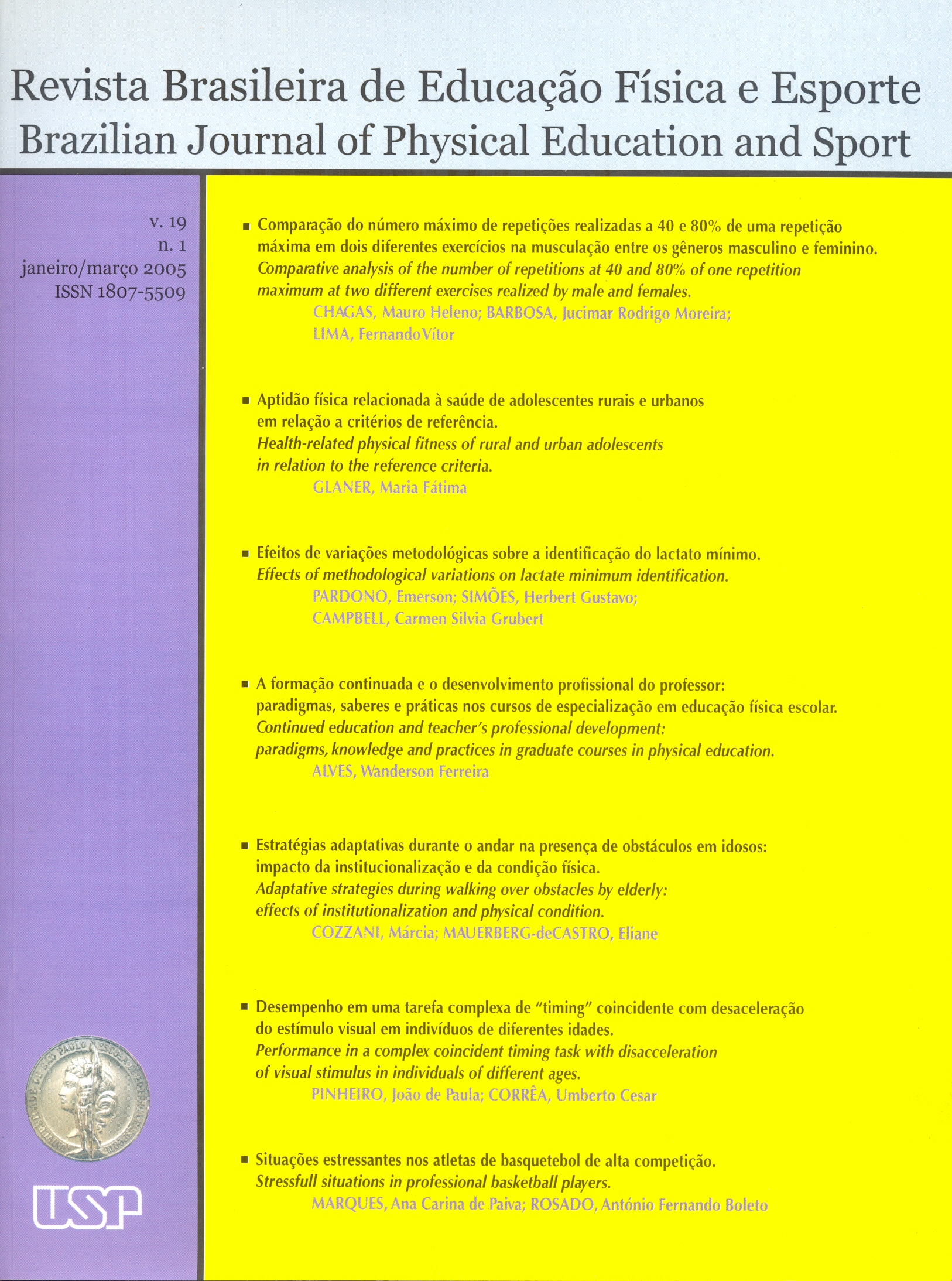Adaptive strategies during walking over obstacles by elderly: effects of institutionalization and physical condition
DOI:
https://doi.org/10.1590/S1807-55092005000100005Keywords:
Elderly, Institutionalization, Aging, Mobility, Walk and obstacle avoidanceAbstract
The purpose of this study was to analyze the effects of institutionalization of older individuals on the kinematics parameters of preferred walking and on walking over an obstacle. Also to identify adaptive strategies used by institutionalized older individuals while walking over an obstacle and compare them to the strategies utilized by non-institutionalized sedentary and active older individuals. Forty-five individuals volunteered for this study and were divided into three groups: institutionalized group (IG), with 13 older individuals from a nursing home in the city of Rio Claro, SP, with an average age of 73.6 (± 9.18); active group (AG), composed of 13 older individuals with an average age of 64.9 (± 6,22), participants of a physical activity program for older individuals and sedentary group (SG), white 19 older individuals with an average age of 72.9 (± 8.93). Each participant filled out a modified Baecke Questionnaire designed to verify their daily living activity (DLA) score. They walked at their natural preferred pace along an 8-meter-long corridor. Then, they again walked, cross having to over an obstacle placed half-way down the corridor. Two different obstacle heights were tested: 15 cm and 2 cm. The analyzed parameters were length and velocity of the last step prior to crossing over, horizontal distance between the closest foot to the obstacle and the obstacle itself, and the vertical distance between the crossing foot and the obstacle. The results showed the IG more closely approached the obstacle prior to crossing over. Also this group kept the elevation of the passing leg constant while crossing over both obstacles. We concluded that walking over obstacles represents a bigger challenge to institutionalized older individuals than to their non-institutionalized peers. Institutionalized older individuals exhibit an invariant pattern while lifting the leg over the obstacles. Although, they adjust the distance between foot and obstacle just prior to passing the obstacle their invariant patterns probably reflect functional limitations (i.e., limited muscle strength) and strategies to avoid loss of balance.Downloads
Download data is not yet available.
Downloads
Published
2005-03-01
Issue
Section
naodefinida
License
Todo o conteúdo da revista, exceto onde está identificado, está licenciado sob uma Licença Creative Commons (CC-BY)
How to Cite
Cozzani, M., & Castro, E. M.- de. (2005). Adaptive strategies during walking over obstacles by elderly: effects of institutionalization and physical condition . Brazilian Journal of Physical Education and Sport, 19(1), 49-60. https://doi.org/10.1590/S1807-55092005000100005


